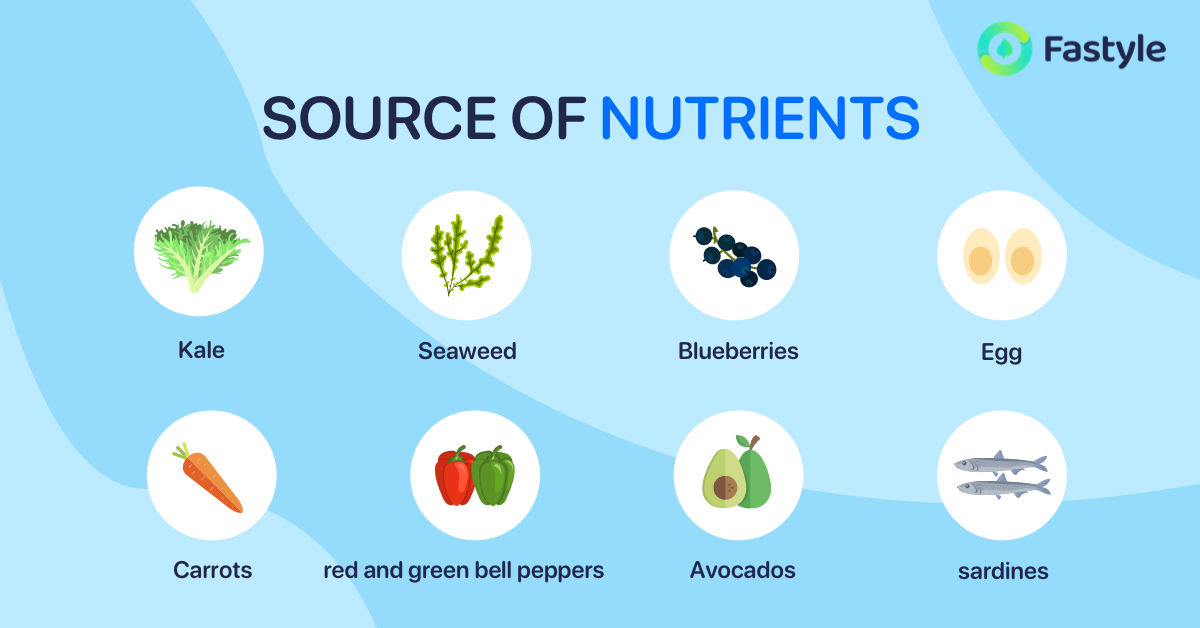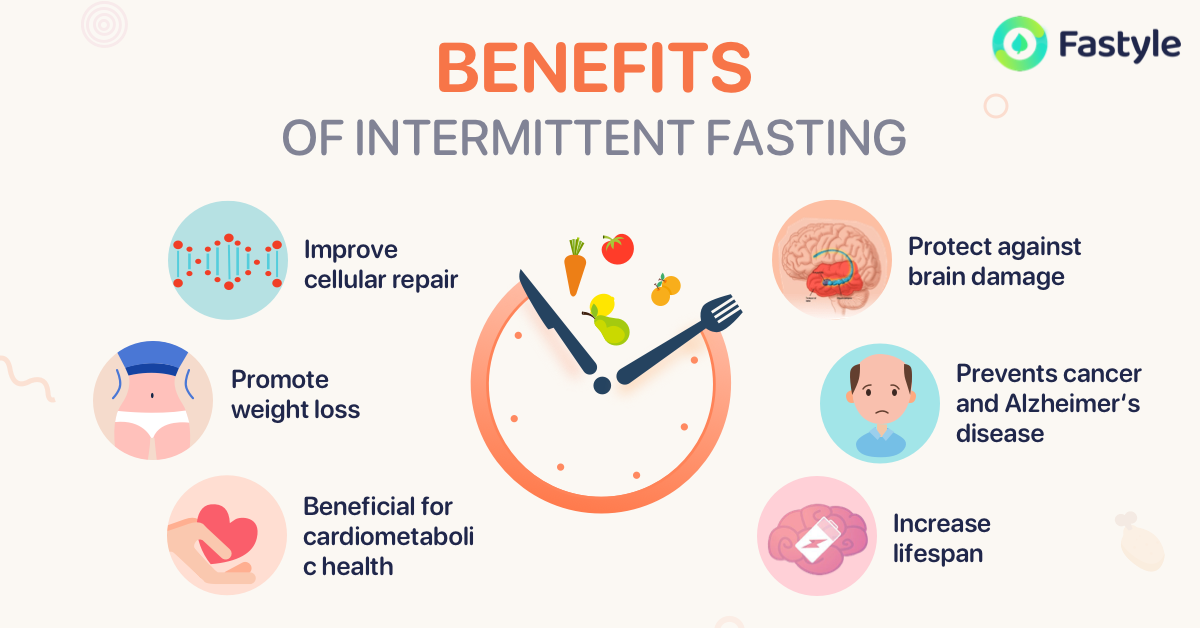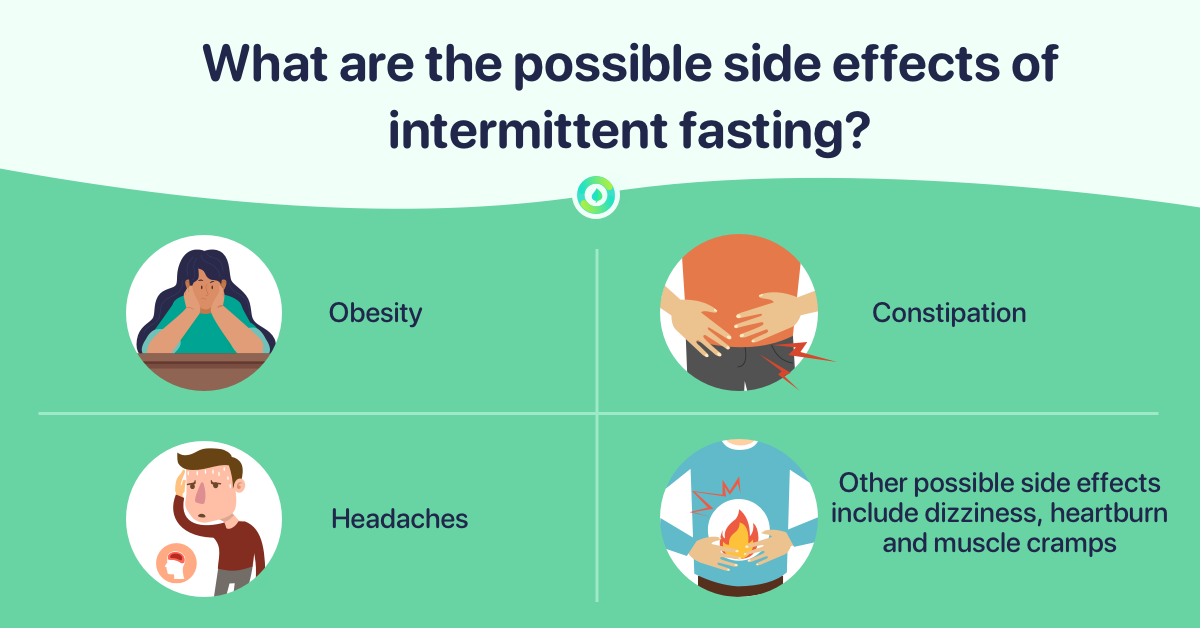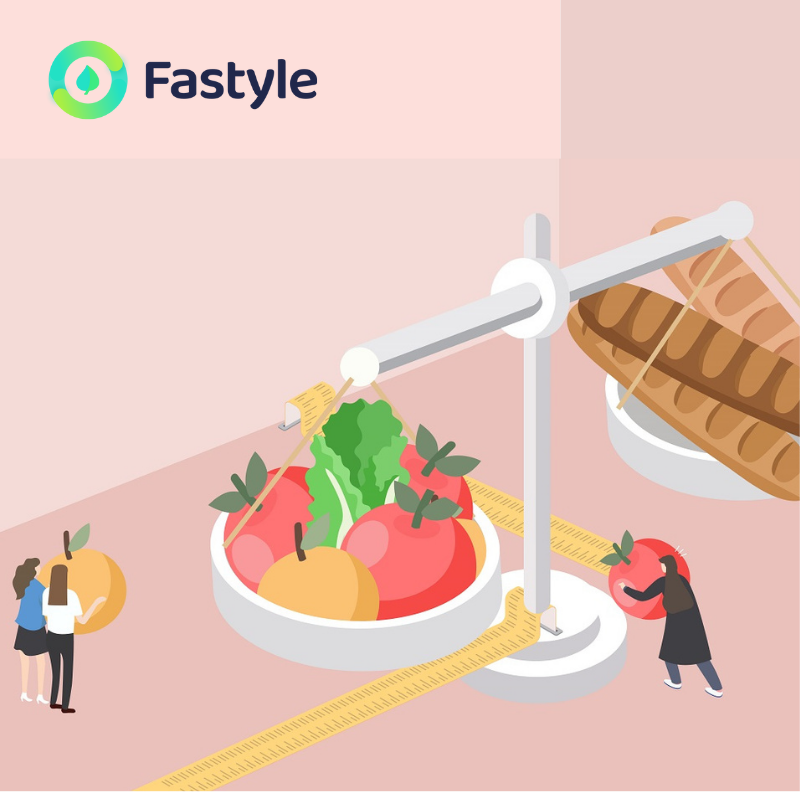Intermittent fasting and ketogenic diet are both popular within the health community. They are widely used to lose weight and sometimes for health management. Current research has suggested their health benefits and many Fastyle users wonder if it is safe to do both at the same time. In this article, I am going to talk you through what are they, healthy benefits, weight loss, and whether you should combine them together.

What Exactly is Intermittent Fasting?
Intermittent fasting is not a specific diet, but an eating pattern that cycles between fasting and normal eating during a specific time period. It doesn’t have specific rules on what you should eat but rather when you should eat. Some common intermittent fasting methods include 16:8, 5:2 diet, and alternate-day-fasting.
Intermittent fasting is widely used for weight loss because it also allows your body to enter a metabolic state called ketosis. By extending fasting time, restricting calories intake, the drop in glucose and insulin level switch body metabolism and reach ketosis. In this metabolic process, your body will break down stored fats to produce ketones as an alternate fuel source rather than glucose.
There is no typical food restriction when it comes to intermittent fasting. However, people on intermittent fasting may miss out on a meal or two or eating less food in general because of restricted eating time, which leads to an overall reduced energy intake and weight loss.
What is Ketogenic Diet?
The ketogenic diet is a specific diet that is high in fat and very low in carbohydrates. How low in carbs? We are talking about 20-50g of carbohydrate per day typically. And macronutrients distribution will likely be 70-80% fat, 5-10% carbohydrate, and 10-20% protein.
The ketogenic diet has been used to treat epilepsy for a long history and it is now widely known and used for weight loss. This is because by limiting carbohydrates which is your body’s preferred fuel, and a high-fat diet, the nature of the ketogenic diet forces your body to reach ketosis. Therefore, it lets your body burn more fat for a source of energy. And in order to maintain ketosis, you will need to follow a strict low carb, high-fat diet.
You may have seafood, meat and poultry, eggs, low-carb vegetables, cheese, nuts and seeds, avocado, oil (coconut oil, olive oil, other vegetable oils), butter and cream, plain Greek yogurt, berries, unsweetened tea, and coffee, dark chocolate, and cocoa powder.
You should potentially avoid sugary goods, grains, pasta, bread, cereals, most fruits & juice, beans/legumes, root vegetables and tuber (a starchy vegetable), some condiments, unhealthy fats, alcohol (beer), sugar-free diet food.

What are Their Similarities and Differences?
Both ketogenetic diet and intermittent fasting lead the body to reach ketosis, therefore they share quite a few similarities in their health benefits and side effects.
Healthy benefits

Ketosis mainly involves the decreasing of blood glucose, glycogen and insulin levels and increase in fat metabolism, which may have the following benefits:
● Weight loss
● Fat loss
● Reduce blood glucose
● Improve insulin sensitivity/resistance
● Lower heart disease risk factors (Improve blood lipid profile & blood pressure)
● Reduce inflammation
● Reduce symptoms and slows progression for neurodegenerative diseases (Alzheimer’s and Parkinson’s disease)
Side effects

Because intermittent fasting and ketogenic diet both allow your body to enter ketosis, they share similar side effects which include:
● hunger
● headaches
● dizziness
● fatigue & lethargic
● poor endurance when exercising
● low mood & irritation
● nausea
● abdominal discomfort
● insomnia
● constipation
Both may increase the risk of micronutrient deficiency in the long term because of the restrictive diet (ketogenic diet) and less food intake in general (intermittent fasting).
The ketogenic diet may low level of protein in the blood, fatty liver and a higher risk of kidney stones in long term.
Weight loss
The ketogenic diet may help you lose weight quicker by significantly reducing carbohydrate intake. This is because the carb is usually stored in your body with water. Therefore, the initial weight loss from the ketogenic diet is the loss of water weight. And high protein intake helps to reduce hunger and suppress appetite during weight loss.
When intermittent fasting is done with a calories deficit that is naturally created by shortening your eating window, its weight loss mechanism is similar to a traditional diet but without food restriction. In another word, you’re cutting your calories simply by eating less.
When it comes to long-term weight loss, the ketogenic diet is not superior to the traditional low energy diet. The restrictive nature of the ketogenic diet may also be difficult to sustain in the longer term. As for intermittent fasting, there is no food restriction compared to a ketogenic diet, and therefore may be easier to sustain in the longer term.
Can You or Should You Combine Them?
Can you combine them? The answer is yes, but it is not necessary.
Intermittent fasting can help your body reach ketosis quicker than the ketogenic diet alone and with fewer “Keto flu” symptoms because it doesn’t significantly reduce carbohydrates.
However, combing both may enhance the state of ketosis, drop that excess weight slightly quicker, and possibly burns more fat by limiting carbohydrates. Additionally, higher protein intake from a ketogenic diet may also help to reduce hunger and suppress appetite.
Should you combine both? Well, it is really up to you. As I said, it is not necessary to do both.
If you find the ketogenic diet manageable and easy to follow. Feel free to combine both at the same time with guidance to monitor your ketone level. However, if you’ve chosen intermittent fasting because it is less restrictive than traditional diets. You can still get the benefits from doing intermittent fasting alone since it still reaches ketosis with a minimal fast of 12 hours. You can increase your protein intake during the eating window to help you maintain lean muscle mass, reduce hunger and suppress appetite just like the ketogenic diet does.
Summary
- Intermittent fasting and ketogenic diet both help you lose weight by entering ketosis, which means your body will break down fat for energy rather than glucose.
- Ketogenic diet has a restrictive food choices where as intermittent fasting only restricts the time you eat.
- Both share similaries in their proprosed health benefits, side effects and weight loss.
- Intermittent fasting may be easier to sustain for longer term than ketogenic diet for weight loss due to the restrictive nature of diet.
- You can combine both, but it is not necessary.
- You can still get the benefits from intermittent fasting alone with a minial fast of 12 hours to enter ketosis. Increase your protein intake to maintain muscle mass, reduce hugner and supress appetite.
FOLLOW US
